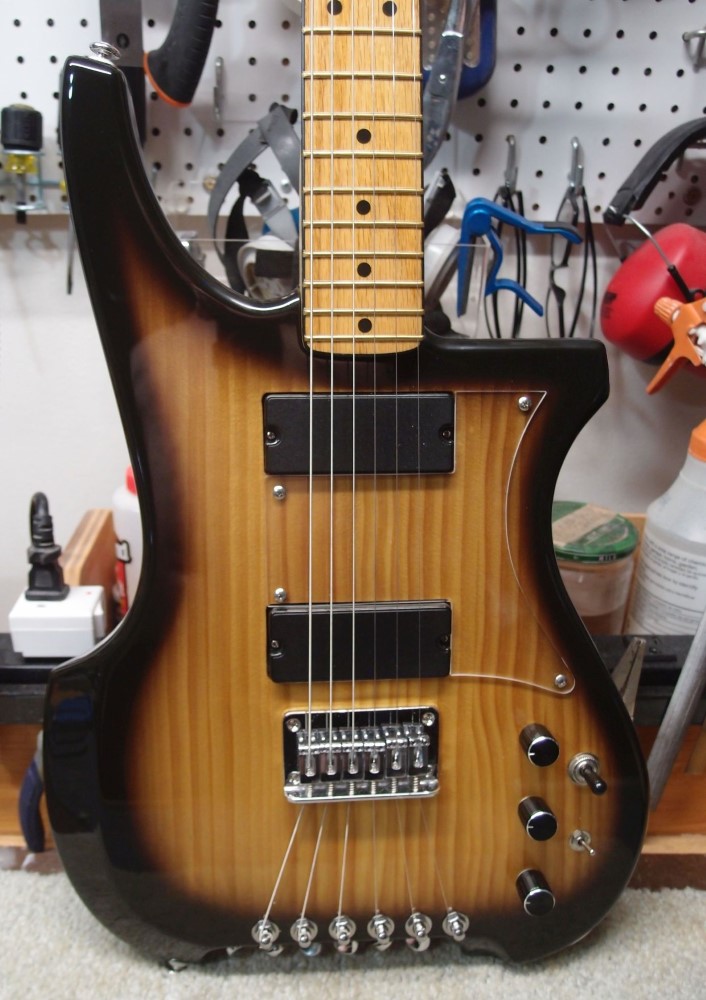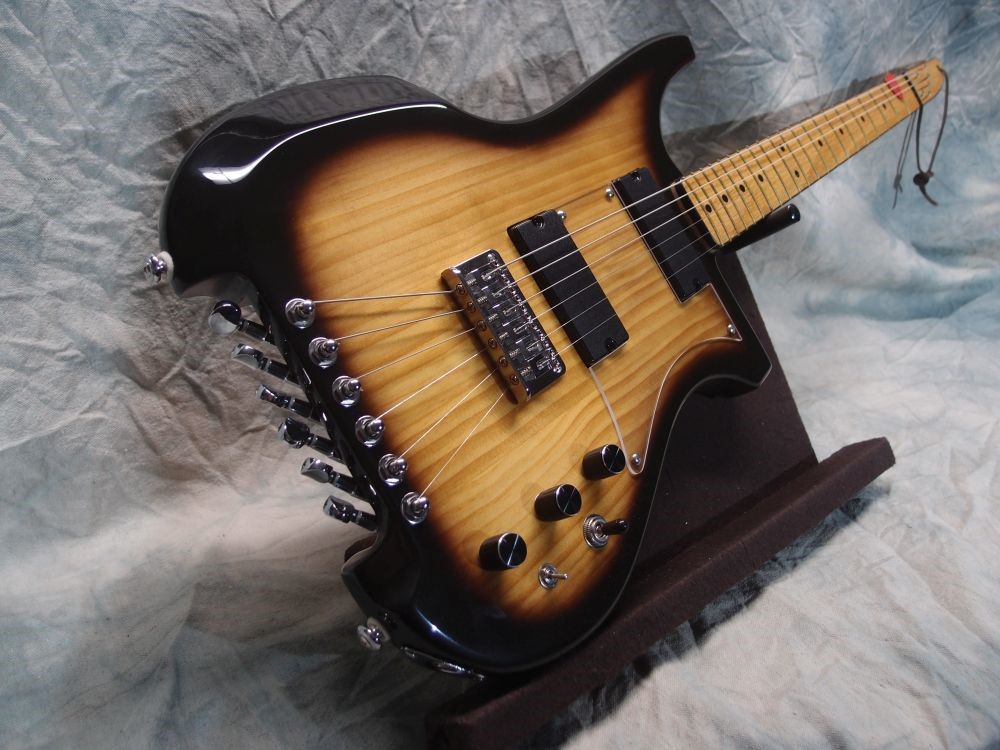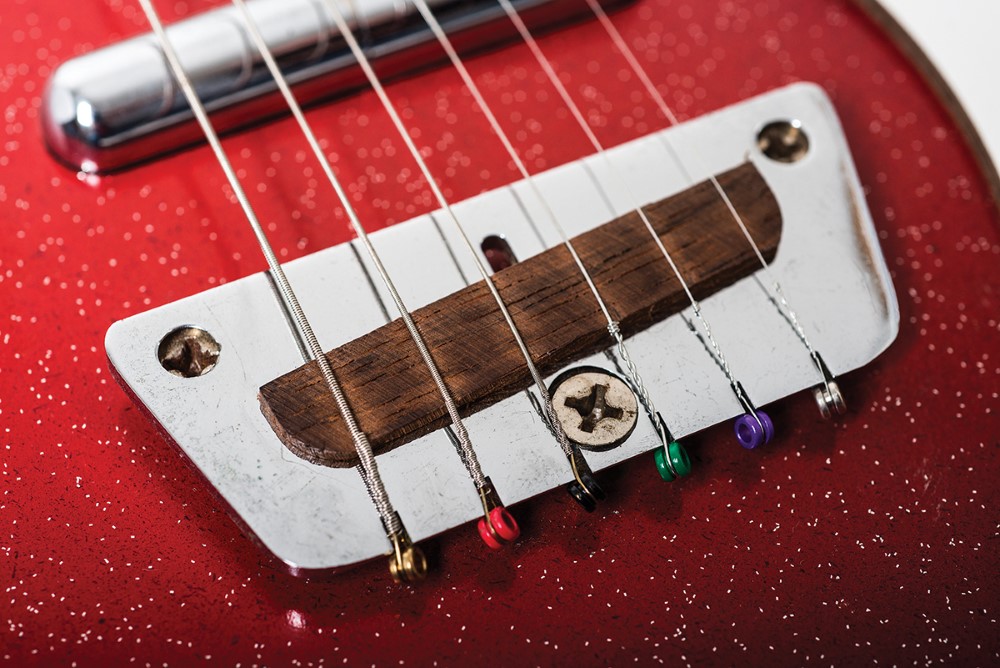Kubicki Factor Guitar (8/8)
July 2, 2020

Strung up with a rough setup. Everything tweaked and tightened. Feels good, haven't plugged it in yet. The guitar stands nicely on its two strap button feet without a stand, so you can safely lean it against a wall or amplifier. At least until your drummer gets loose, then nothing is safe. You can use the leather loop on the headstock to hang it up out of reach.

The crowded tuners were a bit of a pain when stringing. But once you get it tuned-up, they are not a problem. I should have put a pickup behind the bridge too! The extensions are (hi to low) E A# G# E B F# and sound kind of like a harp.

This is what you're dealing with at the business end. The tuners are angled up at you. Actually, mounting them straight out would have been only slightly wider, and might work better. But this works, and looks cool.

Here is how the strings fit in the headstock. Just a smaller version of the bass. The fretboard is oak from the hardware store. The guitar inherited that from the bass. Oak (or maple) was the only thing that I could find that would be long enough to cover a 24-fret bass neck and the headstock in one piece, needed 48". I have used oak before for a fretboard, and it works fine, just a bit of extra work filling and finishing.
As usual, with my guitar builds, this neck has a fixed steel bar for a truss rod. There will be no adjusting it: level the frets, set the saddle heights, and you're done, forever. It is already quite good, but I am sure as I play with it I will find a few high spots in the frets that can be stoned-down to perfection.
Now I have just one more old project to finish off.
August 24, 2020

I went into the electronics, and reversed the leads on the volume control for a nicer ‘sweep’. Then I started troubleshooting a problem with the passive tone control that turned out to be an interaction with the EXP circuit. Long story short, the EXP disables any tone control that is downstream from it. I moved the passive tone control upstream, and now it works fine. I have a separate review for the EXP tone control, I’m not all that impressed, but I’d say try it yourself, it’s not all that expensive or difficult.
I did the actual setup and intonation weeks ago. With a short guitar neck and a steel bar truss rod, there really is no settling-in period needed for this one, but it got it anyway. It plays great. The cheap yellow brass fret wire works fine. It may not hold up as well as nickel-based wire in the long term, but I think you’d have to play it an awful lot to wear it out.
The humbuckers, which are the exact same models I used in the Kubicki bass, sound fine. The series/parallel switch gives a single-coil tone, while still humbucking. The only issue I have is that the tuners are small and closely crowded together, and a little hard to work, especially when you are installing strings and cranking a lot. Once you get it tuned up, no problem, in fact, it held perfect tune for a month while I did other things.
All-in-all, I am pretty pleased.












Questions or Inquiries?
Just want to say Hello? Sign the .